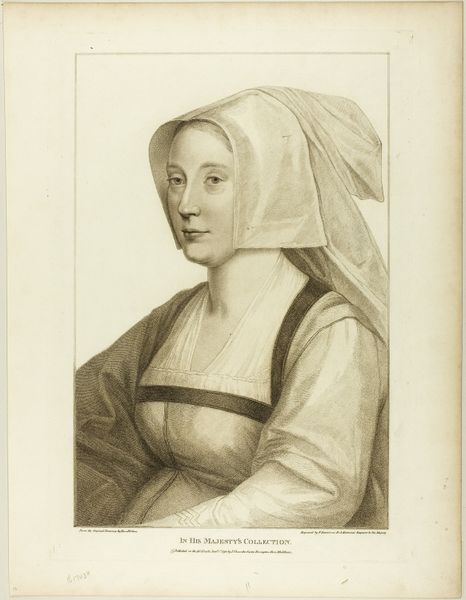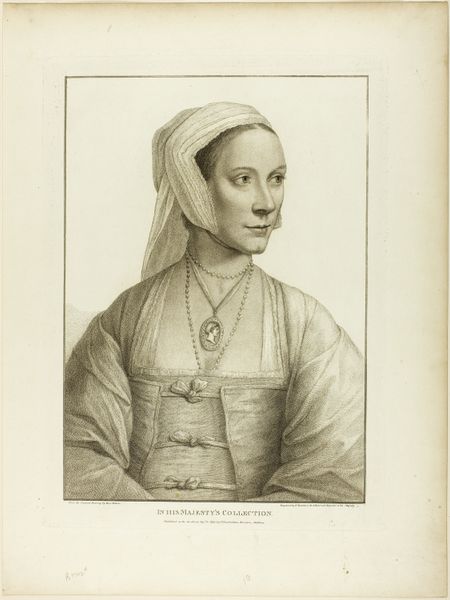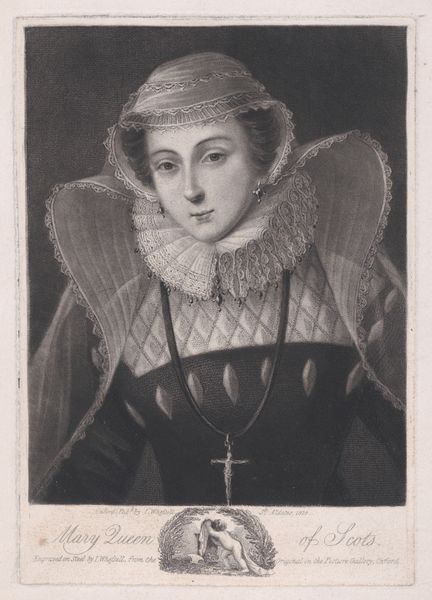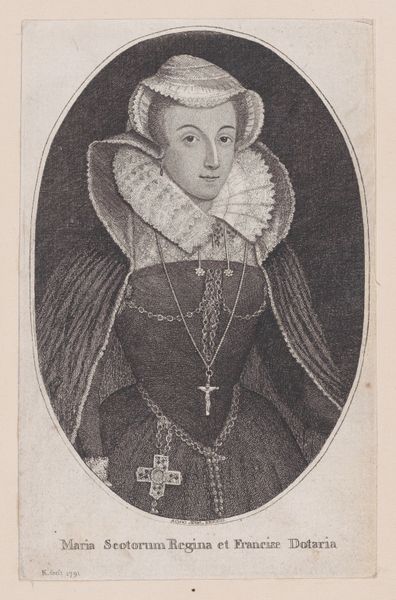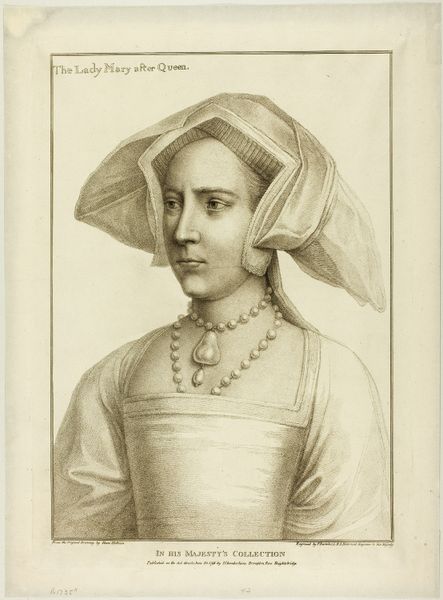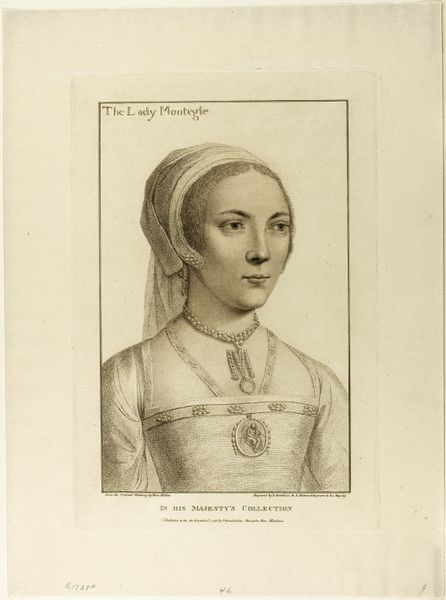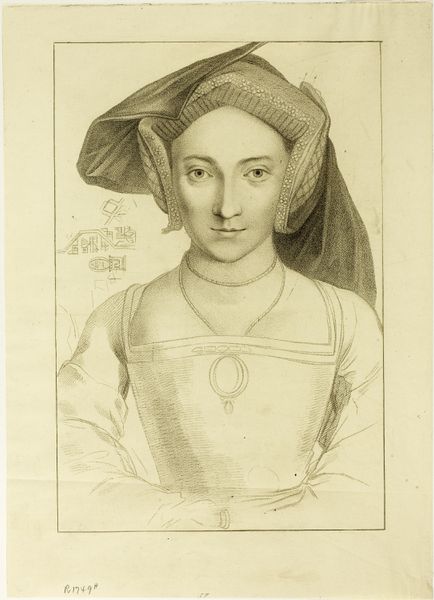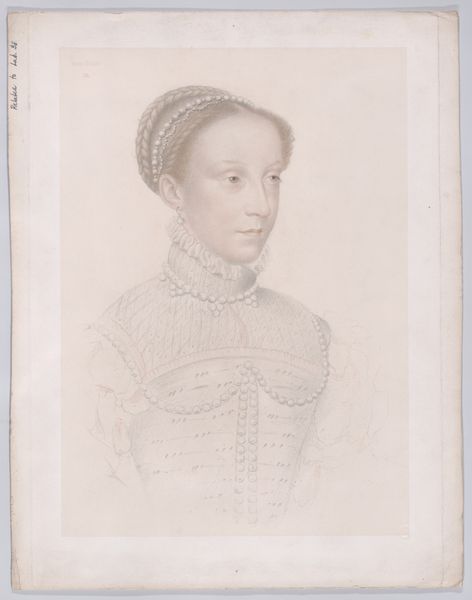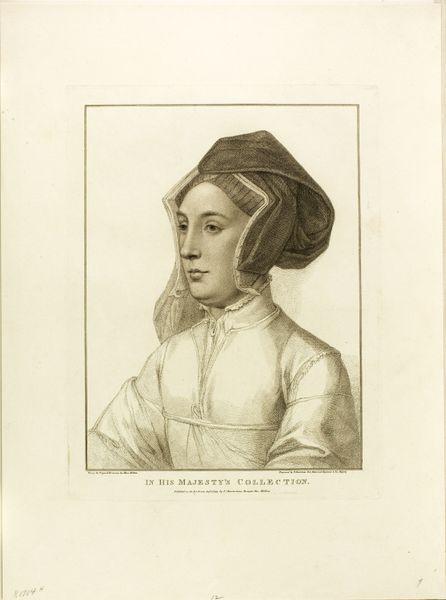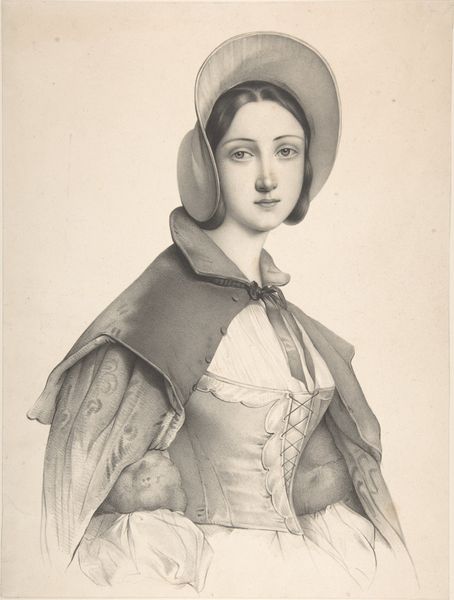
drawing, print, paper, engraving
#
portrait
#
drawing
# print
#
paper
#
11_renaissance
#
line
#
northern-renaissance
#
engraving
Dimensions: 521 × 283 mm (image); 540 × 310 mm (plate); 540 × 401(sheet)
Copyright: Public Domain
Curator: Here we have Francesco Bartolozzi’s “Queen Jane Seymour,” an engraving created in 1795 after an earlier drawing. Editor: The print exudes such quietude, don't you think? The soft, diffused light gives it an ethereal quality. Notice how the delicate lines define her features, yet there's an overall smoothness, almost a dreamlike texture, enhanced by the sepia tones of the print. Curator: Absolutely. Consider the complex context in which Bartolozzi created this portrait. As a prominent printmaker working in England, he was part of a vibrant network of artists, patrons, and intellectuals who were fascinated by Tudor history and royal portraiture. The image of Jane Seymour had acquired specific significance, considering her position as Henry VIII’s third wife and the mother to Edward VI. Editor: Yes, but looking purely at the form, the composition relies heavily on line. Bartolozzi’s masterful use of varied line weights creates a sense of depth and volume, and what I think it particularly striking is how the lines follow the contours of Jane’s face and the folds of her elaborate headwear, achieving almost photographic precision while losing none of its expressive character. Curator: And, of course, let’s not forget the politics of representation in Tudor portraiture. Jane Seymour was carefully styled to project an image of virtue and royal authority in the prints based upon earlier works during a time of significant social and religious upheaval. The very act of replicating and disseminating her image through print was a political act, shaping and reinforcing notions of power and legitimacy. She literally embodies patriarchal notions of fertility! Editor: That’s precisely what is not depicted, the absence of it. Though not devoid of narrative weight, the work operates mainly on the optical, on formal relations between volume and outline. Notice how Bartolozzi manipulates the tonal scale. See how the engraving relies more on subtlety in tone than drastic contrast. Curator: By understanding Bartolozzi’s “Queen Jane Seymour,” we can consider questions about female power, the circulation of imagery, and the politics embedded within artistic representation. Editor: Indeed. Analyzing form offers a deeper understanding of technique that underscores meaning within the broader social discourse, leading us back to her visual, and lasting, allure.
Comments
No comments
Be the first to comment and join the conversation on the ultimate creative platform.
